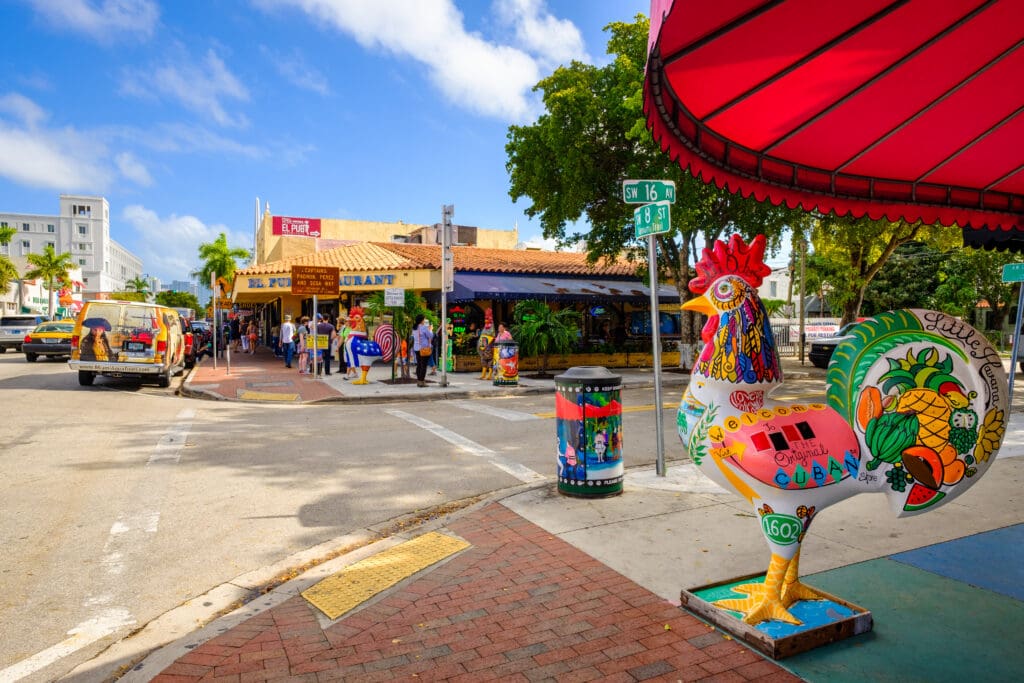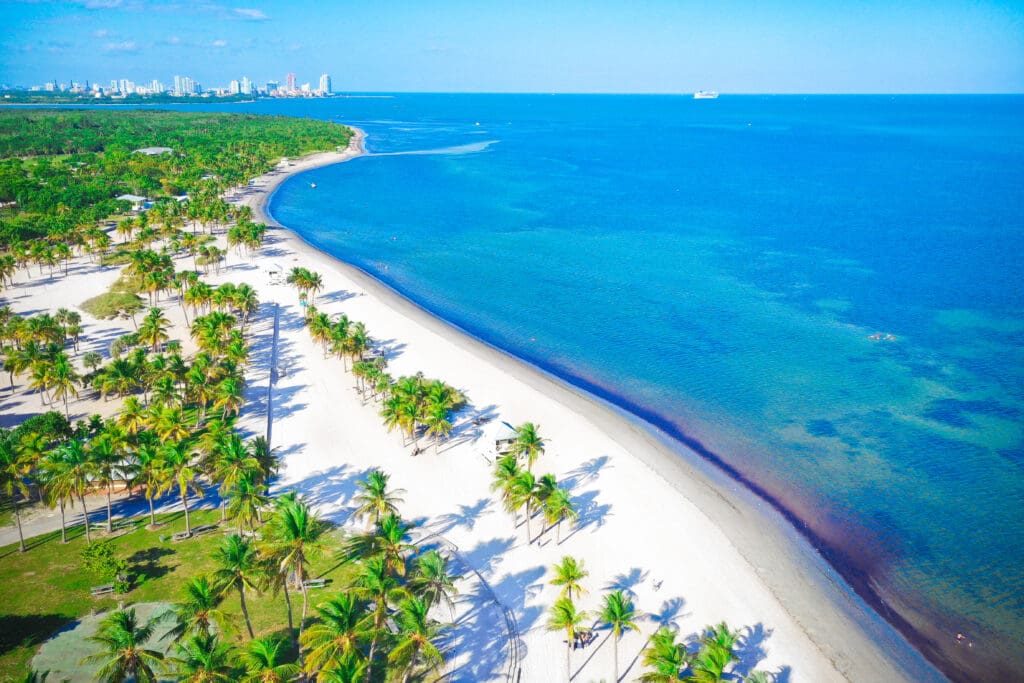Your Quick Takeaway
- Miami and Miami Beach are distinct geographical and experiential entities, separated by Biscayne Bay, rather than a single monolithic destination.
- Mainland Miami is a sprawling urban center known for its diverse neighborhoods, cultural institutions, financial hub, and artistic districts like Wynwood and historic areas like Little Havana.
- Miami Beach is an iconic barrier island renowned for its pristine beaches, Art Deco architecture, luxury resorts, and vibrant nightlife, especially in South Beach.
The Scene’s History
- While often confused as a single destination, Miami and Miami Beach are distinct geographical entities separated by Biscayne Bay, each offering unique atmospheres, cultural experiences, and attractions; understanding these fundamental differences is crucial for visitors to tailor their travel plans and curate a truly personalized South Florida experience.
Making the Experience Yours
- Understanding the distinct identities of Miami and Miami Beach is crucial for travelers to tailor their visit effectively, ensuring they choose destinations and activities that align with their specific interests, whether seeking cultural immersion and diverse urban experiences on the mainland or glamorous beach life and vibrant nightlife on the island. This distinction allows for more efficient planning of accommodation, dining, and transportation, ultimately maximizing the enjoyment and relevance of their South Florida adventure.
The Community Buzz
- Miami (the mainland) is viewed as a sprawling, dynamic urban center and global hub for finance, culture, and trade, offering diverse neighborhoods, cultural attractions, sports, and a broad range of international cuisines.
- Miami Beach (the barrier island) is considered an iconic resort destination famous for its dazzling beaches, Art Deco architecture, glamorous nightlife, and high-end shopping, primarily catering to those seeking sun, sand, and sophisticated entertainment.
Often confused as one monolithic destination, Miami and Miami Beach are in fact two distinct entities, each offering a unique flavor of South Florida’s vibrant lifestyle. For anyone planning an unforgettable adventure to this tropical paradise, understanding the nuanced differences between the bustling mainland metropolis of Miami and the iconic barrier island getaway of Miami Beach is paramount. From their geographical separation by Biscayne Bay to their contrasting atmospheres, cultural offerings, and nightlife scenes, knowing what sets these two apart is the key to curating a truly tailored and spectacular experience for every visitor.
Miami: The Mainland Metropolis
The city of Miami, often referred to as “the mainland,” is a sprawling, dynamic urban center that serves as a global hub for finance, culture, and international trade. It’s a melting pot of diverse neighborhoods, each with its own distinct character, offering a rich tapestry of experiences beyond just sand and surf.
Downtown Miami & Brickell

This area is the beating heart of Miami’s urban core, defined by soaring skyscrapers, a vibrant financial district, and a growing array of luxury residences. Here, you’ll find world-class dining, high-end shopping at Brickell City Centre, and major cultural institutions like the Pérez Art Museum Miami (PAMM) and the Phillip and Patricia Frost Museum of Science. The FTX Arena, home to the Miami Heat, also anchors this bustling district, making it a hotspot for sports and entertainment.
Wynwood & Design District

North of Downtown, these neighborhoods have transformed into epicenters of art, fashion, and innovation. Wynwood is globally recognized for its vibrant street art and the famous Wynwood Walls, alongside a lively scene of breweries, galleries, and trendy eateries. The Design District, meanwhile, is a mecca for luxury shopping, showcasing flagship stores of prestigious fashion houses and cutting-edge design showrooms.
Little Havana

Step into Little Havana, and you’re transported to the heart of Cuban culture, just minutes from the city center. Stroll down Calle Ocho, listen to live salsa music, watch skilled cigar rollers, and challenge locals to a game of dominoes at Maximo Gomez Park. This historic neighborhood offers an authentic taste of Cuban heritage through its food, music, and community spirit.
Coconut Grove & Coral Gables

South of the urban core, Coconut Grove and Coral Gables exude old-world charm and lush beauty. Coconut Grove, Miami’s oldest continuously inhabited neighborhood, boasts bohemian vibes, waterfront dining, and leafy streets. Coral Gables, known as “The City Beautiful,” features stunning Mediterranean Revival architecture, the historic Biltmore Hotel, and the enchanting Venetian Pool, offering a more serene and elegant experience.
Key Biscayne

Just a short drive across the Rickenbacker Causeway, Key Biscayne offers an island escape with pristine beaches and natural parks. Bill Baggs Cape Florida State Park provides stunning ocean views, a historic lighthouse, and tranquil bike trails, making it a perfect retreat for nature lovers and families seeking relaxation away from the city bustle.
Miami Beach: The Iconic Island Escape
Separated from mainland Miami by Biscayne Bay, Miami Beach is a barrier island renowned for its dazzling beaches, Art Deco architecture, and glamorous nightlife. It’s the quintessential postcard image of Miami, drawing visitors worldwide seeking sun, sand, and sophisticated entertainment.
South Beach (SoBe)

South Beach is arguably the most famous part of Miami Beach, synonymous with its vibrant energy and iconic scenery. Here, you’ll find the pastel-hued buildings of the Art Deco Historic District lining Ocean Drive, the bustling sands of Lummus Park, and a legendary nightlife scene that never sleeps. It’s a hotspot for celebrity sightings, high-fashion shoots, and endless people-watching.
Mid-Beach & North Beach

Moving north from the energetic pulse of South Beach, Mid-Beach and North Beach offer a more refined and often family-friendly atmosphere. Mid-Beach is home to opulent luxury resorts like the Fontainebleau and the Faena District, known for their lavish amenities and sophisticated dining. North Beach provides a more residential feel with wide, less crowded beaches, charming local eateries, and a relaxed pace, perfect for those seeking tranquility.
Understanding the Core Distinctions
While geographically close, the core experiences offered by Miami and Miami Beach are markedly different, catering to varied preferences and travel styles.
Atmosphere & Vibe
Miami (the mainland) embodies a diverse, multicultural urban atmosphere, blending business sophistication with vibrant cultural enclaves. It feels more like a lived-in city with distinct neighborhoods. Miami Beach, particularly South Beach, is primarily a resort destination, characterized by a glamorous, high-energy, and often party-centric vibe, especially along its famous oceanfront.
Activities & Attractions
Mainland Miami excels in cultural attractions, sports, diverse culinary experiences, and neighborhood exploration. You’ll visit museums, attend concerts, explore art districts, and experience authentic local life. Miami Beach, conversely, is centered around its pristine beaches, world-renowned nightlife, Art Deco architecture tours, high-end shopping on Lincoln Road, and water-based activities.
Dining & Shopping
Both destinations offer exceptional dining and shopping, but with different focuses. Miami’s mainland boasts a broader range of international cuisines, from authentic Cuban in Little Havana to upscale farm-to-table in Coconut Grove, alongside unique boutiques. Miami Beach tends to feature more high-end, celebrity-chef restaurants and luxury brand shopping catering to a tourist demographic.
Accommodation
On the mainland, you’ll find a mix of business hotels, boutique properties, and family-friendly options spread across various neighborhoods, often at more accessible price points. Miami Beach is dominated by large resorts, iconic Art Deco hotels, and luxury boutique properties, many with direct beach access, reflecting its resort town status.
Getting Around
Navigating between Miami and Miami Beach involves crossing one of several causeways over Biscayne Bay, which can experience heavy traffic, especially during peak hours. Ride-sharing services are prevalent in both areas. On the mainland, the Metromover offers free elevated rail service in Downtown and Brickell, while Miami Beach has its own free trolley system, making local exploration more convenient without a car.
Crafting Your Perfect Miami Itinerary
The beauty of Miami and Miami Beach lies in their proximity and complementary offerings. The ideal itinerary often involves experiencing the best of both worlds, tailoring your days to your specific interests.
For the Culture Seeker
Dedicate more time to mainland Miami, exploring the Wynwood Walls, the museums of Downtown, the Cuban rhythms of Little Havana, and the historical elegance of Coral Gables. Evenings can be spent enjoying world-class dining or catching a show.
For the Beach & Party Enthusiast
Focus your stay on Miami Beach, lounging on the sands of South Beach, exploring the Art Deco District, and indulging in the legendary nightlife. Mid-Beach offers a more luxurious resort experience, while North Beach provides a calmer seaside retreat.
For the Best of Both Worlds
Many visitors choose to split their time, perhaps staying on Miami Beach for beach days and nightlife, and then venturing to the mainland for cultural excursions and diverse dining experiences. Planning your travel between the two during off-peak hours can maximize your enjoyment and minimize time spent in traffic.
Ultimately, while “Miami” is often used as a blanket term, understanding the distinct identities of Miami and Miami Beach is crucial for any discerning traveler. Each offers a unique facet of South Florida’s allure, and knowing their individual charms allows you to perfectly tailor your visit, ensuring an adventure that truly captures the magic and diversity of this iconic destination.







